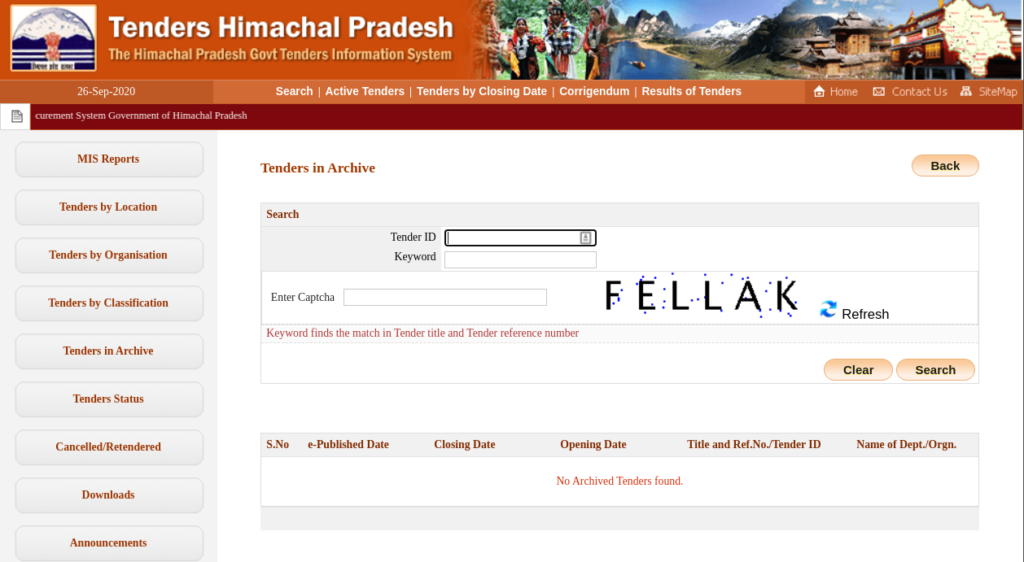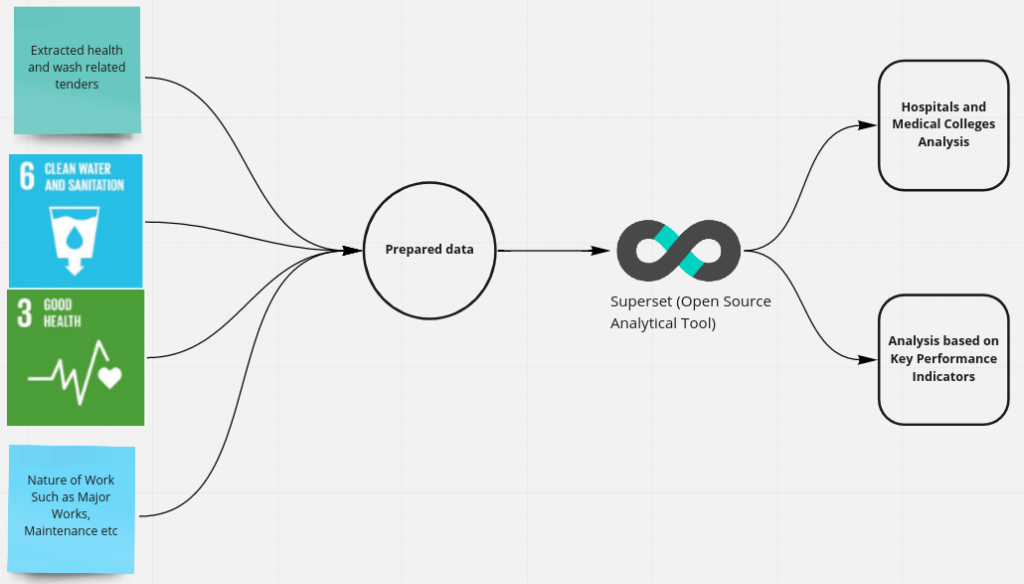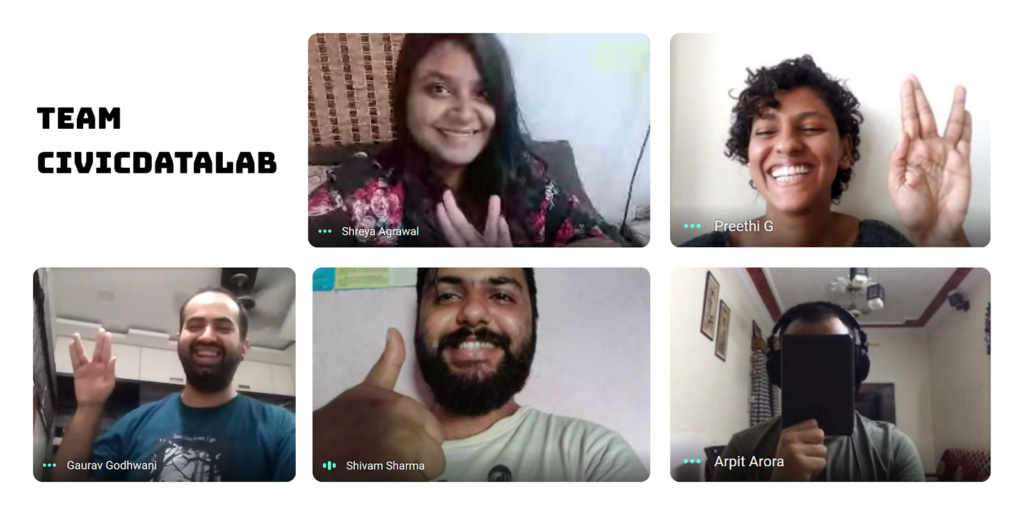Setting the sustainability standard for India’s healthcare procurement

Think big, start small, scale fast with CivicDataLab
Open Contracting Partnership worked with the Presidency of Taiwan to hold an international hackathon, inviting participants from around the world to propose open data solutions for delivering the Sustainable Development Goals (SDGs). We were impressed with the smart and innovative work produced and are proud to feature the top teams’ projects in this blog series.
We are Team Fiscal Force from CivicDataLab, a group of researchers, statisticians, technologists and community mobilizers committed to making the Indian fiscal system more transparent and accessible. Moved by the struggles faced by some of the poorest people in India, we made a commitment to radically transform public health goods, services and works. The Presidential Hackathon gave us an opportunity to develop transparency and accountability mechanisms for healthcare procurement in India.
A lot of people are currently being left behind in India. Almost 300 million people live below the poverty line. Prohibitively expensive healthcare costs keep people poor, and push those just above the poverty line back under again. The situation is worse in rural areas; although home to 70% of the population, only 39% of the country’s hospital beds are to be found here.
Healthcare does not seem to be a priority for the Indian government. It spends just 1.3% of GDP on healthcare (well below the WHO recommended rate of 5%), meaning there are only 0.65 doctors, 1.3 nurses and 1.3 hospital beds per 1,000 people. To make matters worse, India experiences high levels of corruption: a 2017 Transparency International survey revealed that nearly 7 in 10 people paid a bribe in order to access public services. This is the highest bribery rate in Asia Pacific.
This lack of transparency and accountability has far-reaching consequences for availability and access to quality healthcare and medication. A 2018 study by The Lancet found that 2.4 million Indians die of treatable conditions every year. Of the 136 nations examined, India came last. And this was before COVID-19 hit.
Corruption pervades every aspect of the health system in India. Life-saving resources are siphoned off, clinical data for new medicines and health technology is hidden, and procurement is vulnerable to bribery and unfair influence.
Opening up India’s procurement data
India has had an open data policy, the National Data Sharing and Accessibility Policy, for the last eight years. While the policy aims for an increase in accessibility and easier sharing of non-sensitive data, public contracts are not part of the system. Most Indian States publish their procurement information in the public domain, but anyone who wants to read it needs to employ data mining techniques to extract the information in machine-readable formats. The data that is available is published in numerous formats and scattered across various platforms, making it very difficult to understand and to analyze government spending and priorities – and of course, to then demand accountability.
The starting point for understanding the challenges facing public healthcare service delivery is better and more open data. It’s increasingly urgent with the global COVID-19 pandemic exacerbating the problems. The rush to find treatments, vaccines and technology has created even more opportunities for lack of transparency and corruption. Open data would hold the government accountable and help communities plan better.
And so, in the first ever attempt to make India’s procurement data open and machine readable, Team Fiscal Force developed the Health Procurement Performance Index (HPPI), a data-driven tool to assess the efficiency, competitiveness, and value for money of public procurement. Our Health Procurement Performance Index helps users interested in understanding how the government spends on healthcare services to easily compare the performance of administrative units across a state using different views such as map, table and report cards. We also mapped all public contracts to specific Sustainable Development Goals (SDGs) to make it easier to understand if and how India is achieving its SDGs goals on health infrastructure, goods and services. No one should be left behind.
Building it: A focus on Himachal Pradesh
We chose Himachal Pradesh as our pilot state: a rural, mountainous state with many tribal areas. On average, there is just one hospital bed for every 6,000 people here. Himachal Pradesh publishes its procurement data through the national e-procurement system, Mission Mode Project, and the e-Procurement System Government of Himachal Pradesh (known as HP Tenders). The Mission Mode Project is maintained under the national e-governance plan, through which the government aims to make procurement simplified, transparent and results-oriented – this system provides information for all government tenders in the public domain. HP Tenders, meanwhile, is maintained by the State government, and enables bidders to download the tender schedule free of charge, and then submit their bids online.
Unfortunately, neither portal is user-friendly, nor do they provide information in a manner that can be understood by citizens. The data can only be accessed by solving a CAPTCHA and is presented in non-downloadable HTML format, requiring technical skills to extract the information.

Team Fiscal Force started by extracting data from the Mission Mode Project, giving us a consolidated list of tender IDs going back to 2016. We then spent considerable time to identify health and sanitation-related tenders. The process of understanding the procurement data again involved various rounds of discussion with State finance departments and various subject matter experts. The team held sessions with one of the State’s finance departments and brainstorming sessions with Assam Finance Department to define terminologies.
Only then we could start extracting procurement data from HP Tenders. There were various gaps in the data, such as:
- Lack of information on the planning of tenders.
- Lack of exact location of the project (no latitude/longitude).
- Lack of metadata around the tender data available.
- Lack of implementation data for the tenders available.
After extracting we mapped the data to the Open Contracting Data Standard (OCDS). Publishing the data in the OCDS format has clear advantages. It
- provides data in machine readable formats,
- provides an ample amount of metadata to understand the contracting data,
- promotes transparency in decision-making,
- and links the contracting data with a global community.

Mapping performance and analyzing spending
Once we had extracted the procurement data for the health and sanitation sectors, we could map it to both the Sustainable Development Goals (SDG 3 – Good Health and SDG 6 – Clean Water and Sanitation), and to the form of work such as major works, maintenance etc. We used Apache Superset, an open source data exploration and visualization platform, to analyse the data in two ways:
- Evaluation in light of the Key Performance Indicators (KPIs) used by government portals.
- Narrowing the data to seven hospitals and medical colleges, and evaluating it on the basis of opportunity, delay and fiscal planning.
We also extracted district-wide spending information and created Health and Water and Sanitation analytical dashboards. These dashboards gave us a broader perspective of how money is flowing from district to sub-district and tender level.
Exploring the index: how it works
After the above exploratory data analysis, we then developed our dashboard: the Health Procurement Performance Index (HPPI). The primary way to compare districts against certain indicators, type of activities and SDGs for a particular year is an index. The main components of the index are efficiency, competition and value for money, estimated from six KPIs such as average time taken for bid evaluation, average time allowed for bid submission, and spending per capita. The index can be filtered across SDGs, nature of work, indicator type (process efficiency, fiscal planning and participation promotion), and KPIs for each of the indicator types. We have also taken into account the governmental guidelines to determine which district is performing poorly, and tried to highlight them using a red flag approach.
Each administrative unit gets its own report card, which contains cumulative indices of the indicators, and also gives insights on how the district is performing across fiscal years. Extensive documentation on methodology, list of resources and limitations around the approach have also been provided on the platform.

We can already draw some early insights from the prototype. Over the past three years, three of the twelve districts in Himachal Pradesh seem to have consistently spent much less than they budgeted for saving about Rs 200 lakhs or US$270,000: Bilaspur, Mandi, and Hamirpur. Other districts such as Shimla have had significant cost overruns of about ₹46 crores (US$6.2 million) for health and sanitation-related contracts. On average the districts receive about 3 bids per with tenders from Hamirpur showing slightly higher competition (4 bids per tender).
There are also large differences between districts on spending per capita: The second most populous district in the state, Mandi spent about ₹39 (US$0.50) per person on capital expenditure, which is much less than Chamba which spends on average ₹114 (US$1.50).
We will continue to explore the information to understand if there is for example a correlation between different types of tenders, spending and the population density.
What next? The road ahead
As we expand the project beyond the pilot, we hope that in the short to medium term, the Health Procurement Performance Index will help promote and encourage better procurement data publishing and dissemination standards, along with an increase in analysis of how the government spends on public health services. We will scale our project across India and have already had strong interest from Assam, and have begun to engage with Uttar Pradesh with three additional states in the pipeline.
As we continue to build capacities of government agencies to publish and use data, we expect that our efforts will lead to a more efficient health management system. Better understanding and oversight of health infrastructure, medical supply funds and procurements will help identify solutions and reforms for improving service delivery, enabling timely budgeting and inventory management, and reducing corruption. Key to this is our work to help create an enabling environment for open contracting by advocating for explicit inclusion in legislation, regulation and policies.
The Health Procurement Performance Index will also improve participation from civil society by providing a data-driven monitoring and tracking tool. We will build partnerships with stakeholders such as CSOs, academia and activist groups to use the information to demand greater transparency, identify malpractices and biases and most important of all, hold local and national government accountable. We will also adapt and create hard-hitting open contracting advocacy materials and implementation guidance to help accelerate their progress on this important journey.
The three months of the Presidential Hackathon were a great learning experience for us to explore the procurement ecosystem of Himachal Pradesh, which was a useful starting and learning point for our work. We are extremely grateful to the team at the Open Contracting Partnership for their support throughout this journey in every way possible.
Ensuring healthy lives and well being for everyone is essential for sustainable development. We know that our project to improve healthcare spending will not only provide a comprehensive picture of public health procurement across India but will ultimately help our union and state governments to ensure money is spent wisely and in the best interest of patients. Our work for becoming open contracting superheroes begins now!
